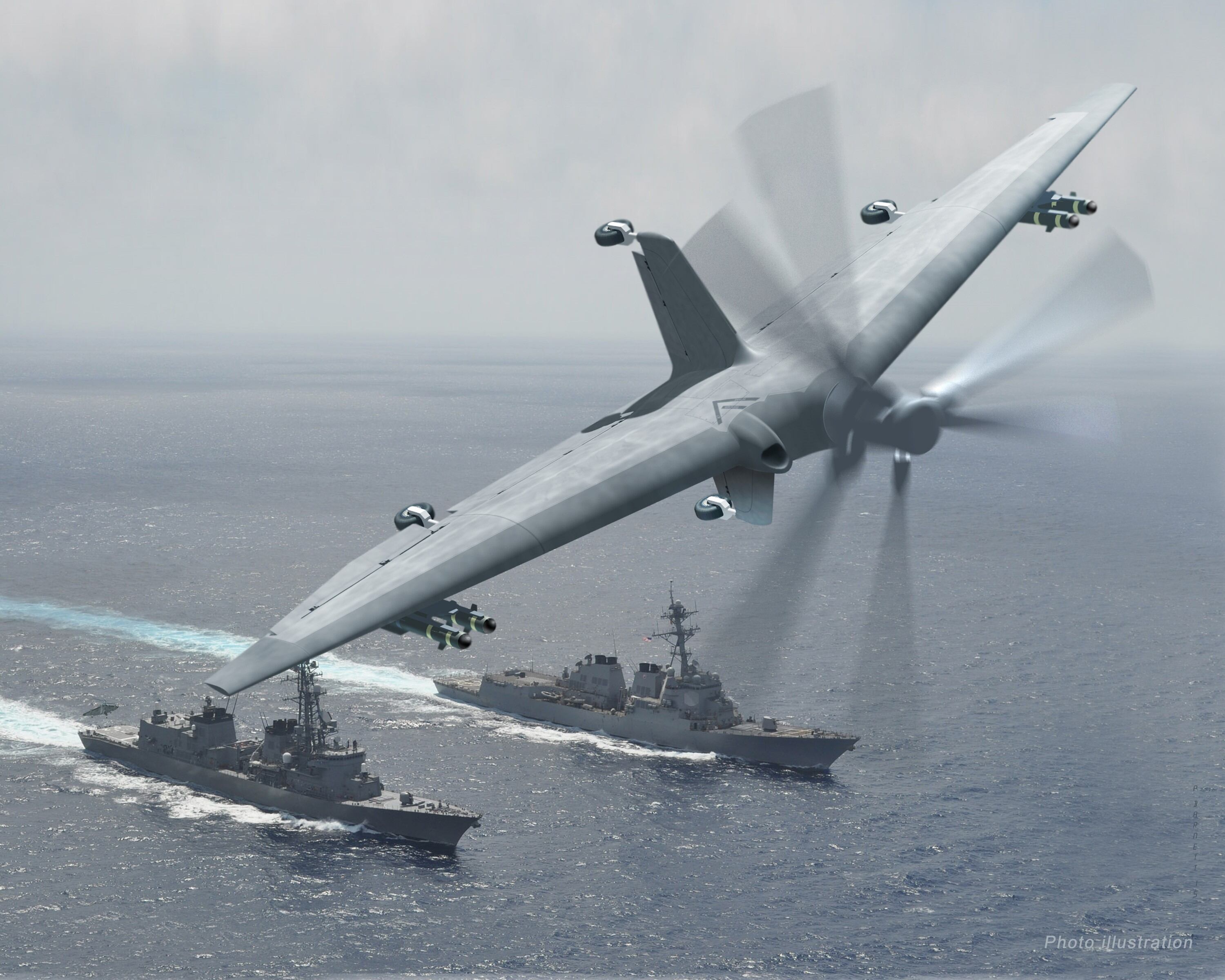WASHINGTON – The U.S. Marine Corps is looking to equip its infantry units with a man-portable, swarming loitering munition that experts say is part of its shift toward countering China with a light and deadly seaborne infantry force.
The so-called “Organic Precision Fires - Infantry Light” program is seeking ground-launched drones that can be deployed with no more than two people, have a range of up to 20 kilometers, loiter for 90 minutes, swarm, be jam resistant and be able to take out enemy troops and materiel, according to a November request for information.
The Marine Corps has been trying to reshape itself as a primarily maritime force that can distribute forces over a massive battlefield such as the South China Sea, operating inside the Chinese weapon engagement zone that may be too dangerous for many military assets to operate inside until certain key objectives can be seized or neutralized. This has led the force to look at ways to pack as much capability into small, disbursed groups of Marines, something the portable drone swarms could support.
RELATED

Special operations forces have used small loitering munition drones in combat for some time, said Bryan Clark, a retired submarine officer and senior fellow at The Hudson Institute, pointing to the AeroVironment Switchblade system. But the swarming effect is something that would take the system a step further, he added.
“The swarming idea would be, ‘How do I overwhelm the enemy’s defenses and cut off lines of escape,’” Clark explained. “If I’m a Marine unit, I’m generally going after a group of people, not just one or two guys the way SOF might be. But the idea here is to cause an area effect. You want to overwhelm defenses or cause explosions over a wider area to try and herd your adversary or cut off lines of retreat.
“You might create a blast pattern or detonate in some kind of order that herds your adversary into an area that you want to be a kill box. So, swarming for the Marine Corps would be about driving your enemy’s behavior in ways advantageous to yourself.”
Marines might also be able to use a swarm as a decoy and try to get the adversary to look for the unit in the wrong locations.
In some ways, this kind of unmanned system could be more effective than traditional Marine implements of war such as a .50 caliber machine gun, said Dakota Wood, a retired Marine and analyst with The Heritage Foundation.
In a future fight, Marines will need to think about units that are “as effective as possible with as small a signature as possible,” Wood said.
“You are looking for weapon systems that can maximize the effectiveness of finding and eliminating a target while minimizing the logistical burden on the unit,” he said. “And you want to maximize the range and any intelligence that system can deliver to you.
“If I have a .50 cal: Hugely heavy, massive logistics burden to carry around the ammo, its very effective on target but I got to get it on target first, and it’s certainly revealing my position. If I have a man-portable unmanned system that I can launch with a camera, it’s small in size so its detectability is reduced, it can send that information back to the unit and it can also hit a target with great precision: That’s an awesome capability to have.”
The swarming capability makes it even more lethal, Wood said, because the drones can communicate with each other to maximize the effectiveness of the strike by attacking from different axes.
Both Clark and Wood agreed that this isn’t a science fiction project but technology that exists today, which means it could be available much more quickly than a typical long-duration DoD acquisition program.
“It’s another indicator of the Marine Corps looking for current technologies that can allow small units to operate autonomously with a low logistical burden,” Wood said.
David B. Larter was the naval warfare reporter for Defense News.








